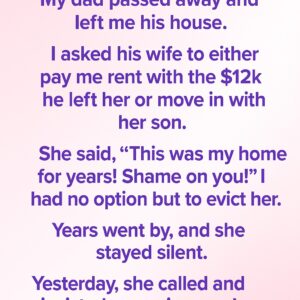Introduction: Memory That Still Shapes Generations
Almost a quarter of a century has passed since September 11, 2001, yet the day remains deeply present in global memory. For those who experienced it firsthand, the memories are vivid—moments when time seemed to freeze, when ordinary routines turned into unforgettable turning points. People recall where they were, who they were with, and how quickly the world felt altered.
Over the years, millions have encountered images, documentaries, and personal testimonies that attempt to capture the impact of that day. From official broadcasts to photographs shared in family albums, the collective archive of September 11 is immense. Yet, history rarely closes its pages completely.
New voices, overlooked fragments, and forgotten records often re-emerge, reminding us that memory is not static. Recently, a rediscovered piece of personal footage appeared online, sparking fresh reflection. A man named Kevin Westley uploaded a recording he had taken from the deck of a boat in New York Harbor.
Though filmed in 2001, the video remained hidden for more than two decades due to a simple privacy setting error. Its release has reignited conversations worldwide, offering a new angle that feels both familiar and startlingly intimate. This rediscovery goes beyond a digital accident—it highlights how memory is preserved, how history is continually reshaped, and why personal perspectives remain essential to understanding shared experiences.
Unearthing a Lost Perspective
The story of the footage is fascinating in its own right. For more than 20 years, the video sat unnoticed on Westley’s old YouTube account, accidentally marked as private. While the world assumed every angle of September 11 had been recorded and shown, this file remained invisible, waiting for rediscovery.
When Westley finally revisited his archives and adjusted the privacy setting, the video quickly captured global attention. Within hours, it circulated across major news outlets, social platforms, and discussion boards. Unlike polished documentaries or official reports, the clip offered something uniquely human: the unfiltered reactions of ordinary people confronted with an extraordinary moment.
The rapid response proved a larger truth—history is never fully complete. Even in an era saturated with media, unseen perspectives can still emerge. Forgotten camcorder tapes, misplaced photographs, or overlooked digital files may hold fragments of memory capable of reshaping collective understanding.
What the Recording Shows
The video begins with a calm yet uneasy image: one tower already scarred against the bright September sky. Papers drift downward, strangely resembling confetti, yet weighted with the tragedy they symbolized. The vantage point from the water captures a quieter distance, contrasting sharply with the frantic images from ground level.
Suddenly, the second plane enters the frame, changing the atmosphere instantly. Voices on the boat cry out in shock, confusion, and disbelief. The camera shakes, not only because of the boat’s movement but also because the moment itself was overwhelming for the person filming.
What makes this clip significant is not only the events it captures, but the way it captures them. It is not narrated by professional journalists, nor accompanied by carefully chosen commentary. Instead, it reflects unfiltered humanity—raw emotions, gasps, silence, and an inability to process what was unfolding.
For viewers today, this perspective offers more than visuals. It conveys the emotional disorientation of that morning in a way no polished broadcast could. Why New Angles Matter in Historical Memory
Historians often emphasize that primary sources—whether letters, diaries, or personal footage—add irreplaceable value to our understanding of the past.
Westley’s video is important not because it reveals new facts but because it restores emotional context. Professional coverage documented the timeline, the official responses, and the immediate aftermath. Personal recordings remind us of the lived experience.
They show us how ordinary citizens witnessed events, how confusion and fear unfolded in real time, and how memory is shaped as much by feeling as by fact. The rediscovery of this clip raises a broader question: how many other hidden perspectives remain buried in closets, attics, or digital archives? Old VHS tapes, unshared digital files, and personal photographs could each add another piece to the historical mosaic.
Even the smallest detail might reshape how future generations connect with the past. Kevin Westley’s Journey
For Kevin Westley, releasing the video was not only about contributing to public history—it was deeply personal. He explained in interviews that the experiences of that day stayed with him long afterward.
The sounds, the confusion, the overwhelming helplessness—those impressions did not fade easily. But Westley’s story extended beyond New York Harbor. In 2003, he served as an aircraft commander during the U.S.
invasion of Iraq. The echoes of September 11 followed him into military service, shaping his worldview and his responsibilities. He carried not only memories of what he had witnessed but also the burden of transporting fallen soldiers, witnessing grief up close, and navigating the long shadow of conflict.
By sharing his video decades later, Westley opened a window not only into history but also into his own process of healing. His journey demonstrates that major historical events are not confined to one day—they ripple across lives, shaping choices, careers, and generations. Honoring First Responders
No reflection on September 11 is complete without acknowledging the extraordinary courage of first responders.
Firefighters, police officers, paramedics, and volunteers rushed toward danger when instinct might have urged retreat. Many sacrificed their lives. Many more continue to live with long-term health consequences from their time at Ground Zero.
One enduring image is firefighter Mike Kehoe, photographed climbing a stairwell in the North Tower while others were evacuating. His survival became symbolic of resilience, but hundreds of his colleagues never returned home. Kehoe later explained that, despite the risks, he remained in service because of his dedication to helping others.
The rediscovered footage indirectly honors these individuals as well. While it shows civilians on boats and streets watching in fear, it reminds us that thousands of responders moved forward with courage. Their bravery stands as one of the most powerful legacies of that day.
The Role of Memory in Preserving History
History lives not only in textbooks but in memory. Official archives, government documents, and polished films provide essential structure, but it is personal accounts that breathe humanity into records. For younger generations born after 2001, September 11 is history rather than lived memory.
For them, personal testimonies like Westley’s video serve as bridges across time. They transform abstract knowledge into lived experience, ensuring that lessons of resilience, compassion, and unity remain tangible. The footage becomes more than a digital artifact.
It is an invitation to remember—not only the sorrow of the day but also the determination and solidarity that followed. Lessons of Resilience and Unity
Though the day brought immense pain, it also revealed remarkable resilience. Communities across the United States and around the world came together in compassion.
Strangers helped strangers, families opened their homes, and nations extended support. The rediscovery of new footage years later is itself a form of resilience. It shows that memory endures, even when tucked away in forgotten corners of digital archives.
Societies continue to revisit the past, not to dwell in sorrow but to strengthen unity and understanding. Why This Rediscovery Matters Today
As the 25th anniversary approaches, the number of people with firsthand memory of September 11 continues to decline. For younger audiences, the events risk becoming distant history.
Westley’s video therefore carries unique educational value. Teachers can use it in classrooms, researchers can study its perspective, and families can share it as part of intergenerational storytelling. In an age where misinformation can spread quickly, authentic firsthand recordings are vital.
They anchor memory in verifiable evidence, ensuring that history is preserved with accuracy. Conclusion: Bearing Witness Across Time
The release of Kevin Westley’s rediscovered footage is more than just another piece of media. It symbolizes how memory endures, how overlooked fragments can resurface, and how history continues to evolve.
It calls us to remember not only the devastation but also the resilience, compassion, and courage that followed. Nearly 25 years later, the echoes of that day remain powerful. Every rediscovered photograph, diary entry, or video reminds us that history is never fully written—it is kept alive by those who bear witness.
Westley’s contribution stands as a reminder that while grief may soften with time, the responsibility to remember does not fade. It remains with us—to honor, to reflect, and to carry forward the lessons of unity, resilience, and humanity.





